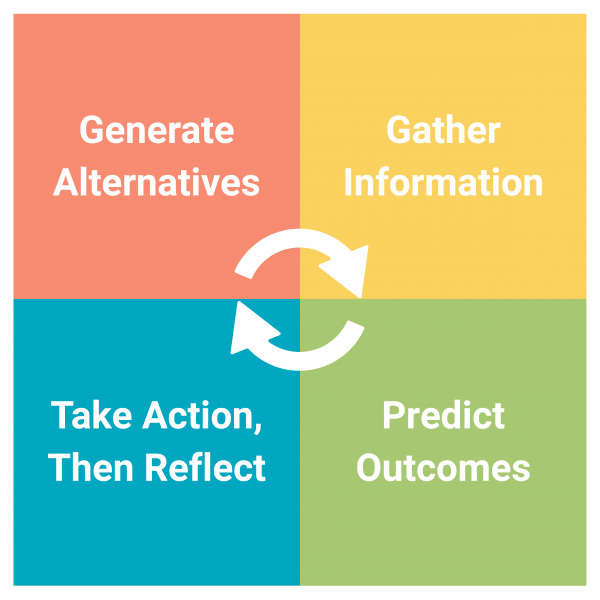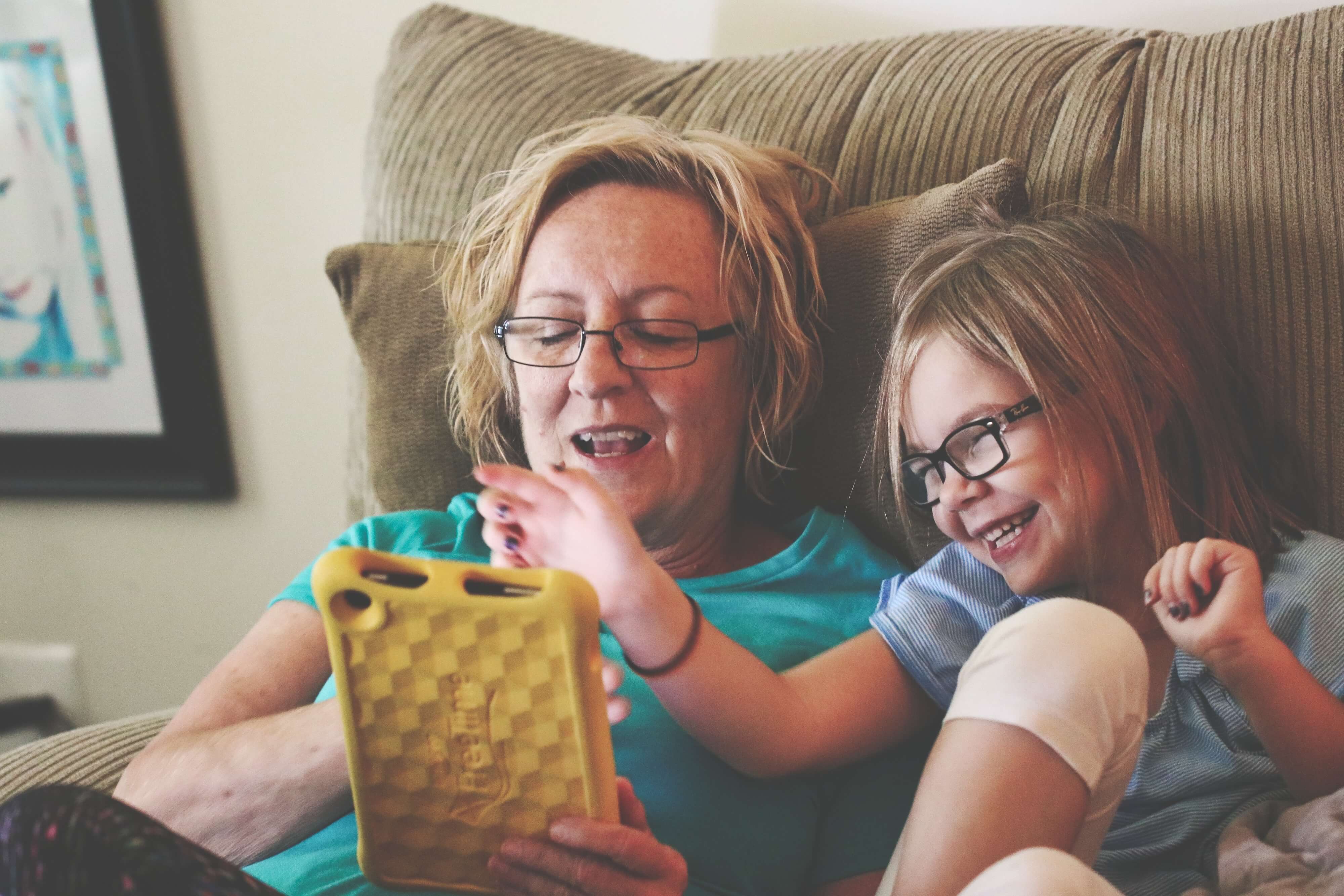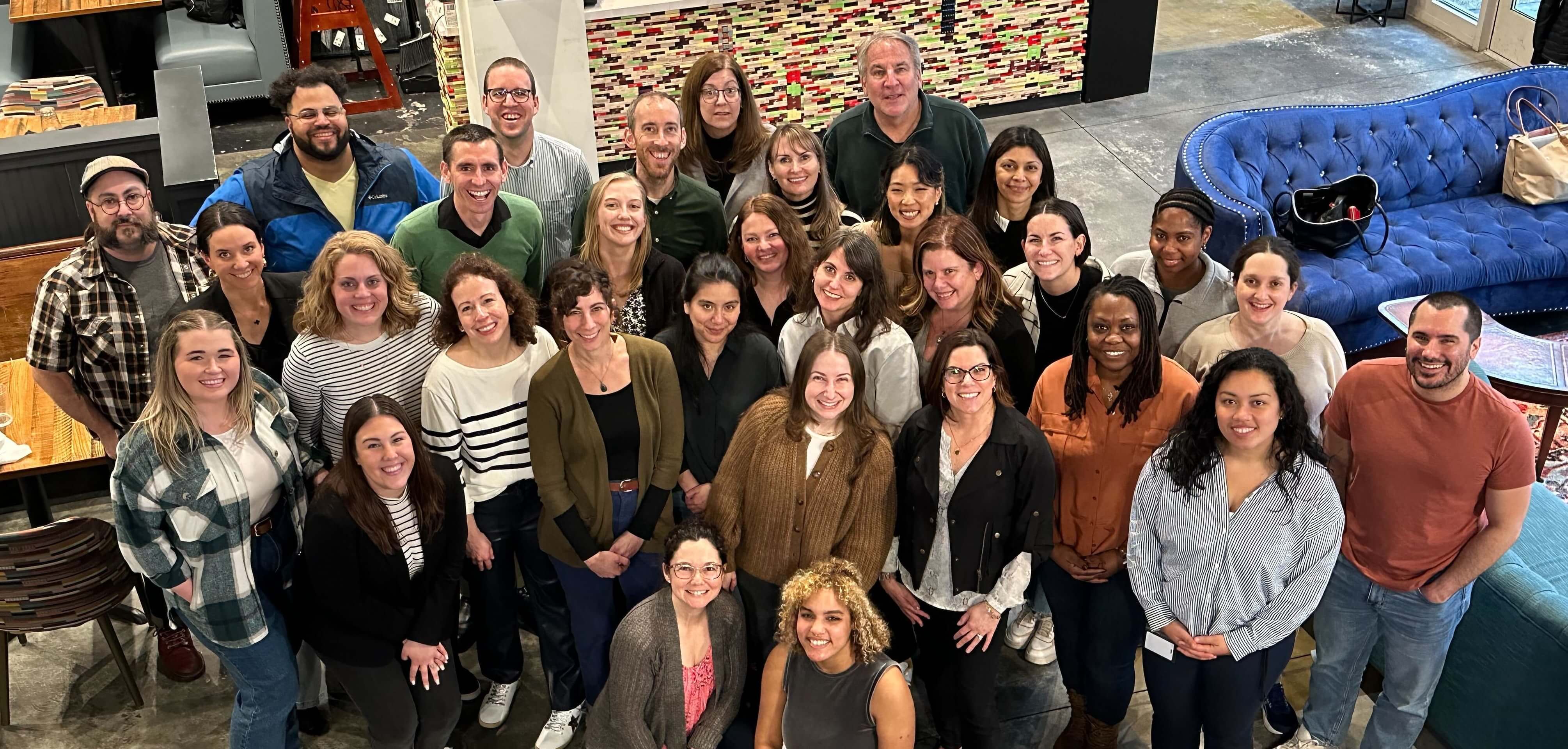3 Ways to Improve Your Classroom Culture This Year with Decision Education

On the last day of school this year, you’ll want your students to leave your classroom feeling like they learned things that will improve their wellbeing in the long run. But if you’re like most teachers, you’re teaching a curriculum that doesn’t leave much room to address life lessons directly. So how can you create educational experiences that really stick with students? A refresh of your classroom culture might be your best bet. Don’t get overwhelmed by thinking you have to foster a utopia, though. These simple classroom culture boosts from Decision Education can improve how students learn and conduct themselves without making them feel like you’ve been lecturing them about their behavior, and students will be able to reap benefits from these ways of thinking well beyond their time in your class.
Classroom Culture Boost #1:
Make “Look out for your future self” your class mantra.

This idea has endless applications. You can give students gentle reminders to look out for their future selves in a variety of situations including:
- Submitting assignments. Encourage students to check their work before they turn it in instead of rushing through it. Their future self will be disappointed if they get back a low grade because they glossed over directions or completely missed questions.
- Preparing for a test. Remind students that “their future self” will probably perform better if they spread their studying out over a few days instead of procrastinating until it becomes necessary to cram.
- Communicating with classmates. Classes that are especially cliquish might need the hint that instead of shutting out or teasing classmates who aren’t in their main social circles, they’ll be happier with themselves in the future if they have memories of how they reached out to other students (or at least were respectful).
- Making progress on big life goals. Even though adolescents are often impulsive and the majority aren’t engaging in much long-term planning, they’re certainly dreaming about what they want to become in the future. If these kinds of conversations come up, mention that the ways we allocate time to our everyday habits can add up to have a big impact on what we achieve in the long-run. (Tim Urban’s TED Talk “Inside the Mind of a Master Procrastinator” does a fun job of illustrating this point.) So instead of spending all of their spare time on scrolling through social media with a show on in the background, maybe students can find the energy some days of the week to make progress towards what they want for their future selves. For example, a student who wants to make a varsity sports team in the early years of high school might work in some extra strength training, a student who aspires to get into an Ivy League university might get a jumpstart on SAT prep, and a student who wants to be a software developer might participate in an online community for coders.
Explain how it’s natural to want to do things that provide instant gratification (in other words, doing something easy or fun instead of something more important), but if we gave the choice to our future self about what to do right now, we’d probably make different choices: we’d work a little harder, build better relationships, or try new things.
Classroom Culture Boost #2:
Teach students how to develop sound judgments.
Students can learn more from class discussions and persuasive writing assignments when they know how to examine and refine their judgment. Whether students are studying current events, history, or fiction, direct them to:

- Value improving their judgment over time more than having the “right” view immediately.
- Identify evidence that supports their initial opinion, but also identify evidence that could disconfirm or weaken their stance. Let them know it’s okay for them to have views that acknowledge the complexity of an issue.
- Evaluate whether the evidence they find is reliable. Some students are tempted to fill in a worksheet with the first information they find just to get it over with, so explain beforehand that you expect them to be discerning about their sources. (This “Five Key Questions of Media Literacy” packet provides more guidance.) Adding a place for them to rate the credibility of each source can reinforce this skill.
- Update their beliefs. Encourage students to be open to evidence that may conflict with what they initially thought instead of stubbornly sticking to opinions. Emphasize that it’s a sign of intellectual maturity, not weakness, to allow their opinions to evolve as they continue researching and listen to others.
When you encourage students to extend their thought processes, class discussions become more engaging. It also lets students know their opinions are valued in your class.
Classroom Culture Boost #3:
Use group projects as an opportunity to teach and practice collaborative decision skills.

Group projects at the end of a unit usually present opportunities for your students to make choices, including which topic to pursue, how work should be assigned to team members, and how to present the final product. Many students hate group projects because they struggle to make compromises and resent imbalanced workloads, but they will be more likely to have positive experiences when they have a structure to guide their decisions. Following these major steps can help:
- Generate alternatives: In other words, students should ask themselves, “What options do we have?” and consider a few of them before they narrow their focus (on one topic, how to get the work done, how to show what they’ve done, etc.).
- Gather information: This step might involve activities like comparing the amount of reliable articles on topics they’re considering or having conversations about scheduling time to work on the project.
- Predict outcomes: “What grade will we get?” will probably be the outcome that matters most to students, but they might also consider questions like, “How many credible sources will we find?” or “How long will editing take?” Push them to imagine what would most likely to happen if they pursued each alternative they’re considering.
- Take action, then reflect: Students will choose one alternative to pursue and eventually recap how their decision making process impacted the outcome (their grade!).
Download our Decision-Making Process graphic organizer and keep copies of it on hand for whenever your students have important choices to make.
No matter what you teach, integrating these simple tips from Decision Education into your everyday classroom culture can improve your students’ study skills and cooperation with one another in ways that will continue to be useful to them in post-secondary education, the workplace, and their personal lives.
Do you plan to try these tips? Are you already doing something similar in your classroom? Please share! We’re always on the lookout for teachers who are helping students learn decision skills and applying them to their own practice too. Reach out to me to describe what #DecisionEducation looks like in your classroom. We want helpful tips and resources to reach as many educators as possible, so we may communicate with you about how we can feature your work.

